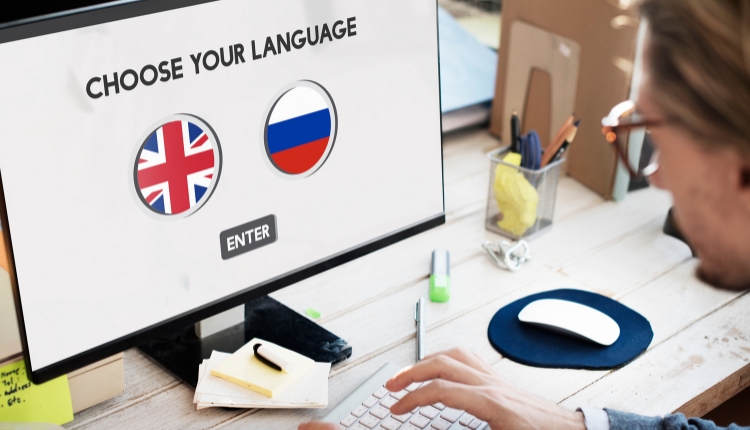Medical Translations for Equitable and Inclusive Healthcare System: Current Trends and Future Expectations
While English remains the language of choice for nearly three quarters of scientific and medical publications worldwide, it is spoken natively by just 7.3% of the global population and is understood by fewer than 20%.[1] It is important to recognize that this linguistic landscape doesn’t reflect the diverse linguistic needs of the global population, particularly among patients with Limited English Proficiency (LEP) who may face barriers in accessing healthcare services due to language differences.
For individuals with LEP, effective communication in healthcare settings is crucial for ensuring quality care and patient safety.[2] However, the current dearth of healthcare interpreters exacerbates these communication challenges. Healthcare interpreters play a vital role in bridging the language gap between healthcare providers and patients with LEP, facilitating accurate understanding of medical information, treatment plans, and informed decision-making.
Furthermore, as medicine and healthcare becomes more interconnected globally, accurate and culturally-aware medical translations are crucial for providing effective and equitable medical care across languages and cultures.
A report indicated that the COVID-19 pandemic positively impacted the healthcare and medical translation industry’s growth. This was due to an increased need to provide critical public health information in citizens’ native languages that may not be widely available otherwise. To address this, several government organizations published pandemic risk details in multiple languages. For example, Germany’s Federal Ministry of Health released COVID-19 materials not just in German but also English, Russian and Turkish. Providing these translations helped overcome language barriers and met demand.[3]
This global trend shows the importance of expanding linguistic coverage in healthcare by adding more languages to medical translation and localization services. As medical translation is a fast-growing niche, let’s explore the trends in medical translations that are shaping the future of medical communications in a digitally driven, globally connected healthcare system. As technology assists but does not replace human translators, understanding these trends will ensure medical translations continue improving access to care worldwide.
Current Status in Medical Translation
1. Clinical Trial Translation
Multilingual global clinical trials for new drugs and treatments are expanding rapidly, with pharmaceutical companies seeking to engage with large patient populations in regions such as Asia, Latin America, and Eastern Europe.[4]
All trial-related documents, including informed consent forms, patient surveys, trial protocols, investigator brochures, and adverse event reports, are now being translated into local languages for ease of understanding and ensuring transparency. Mistranslations in these documents can have serious implications for patient safety and may compromise the validity of trial data, highlighting the need for certified medical translators.
2. Patient Education Translation
Hospitals and clinics are increasingly serving diverse patient populations with limited proficiency in English, necessitating the translation of essential documents such as patient consent forms, discharge instructions, treatment plans, and prescriber information leaflets. Clear communication in the patient’s native language is essential for conveying vital information, particularly for documents like prescription information and pre-operative instructions, to mitigate risks. Healthcare systems like Kaiser Permanente collaborate with medical translation agencies to provide materials in up to 15 languages, including Spanish, Chinese, Russian, and Vietnamese, catering to the linguistic needs of their patient base.
3. Mobile Health Apps/Wearables
The proliferation of wellness apps and wearable devices designed to track user health data is driving the demand for translation into multiple languages to facilitate global accessibility. Companies such as Apple Health and Fitbit customize their user interfaces and content into local languages, supporting languages such as Spanish, Chinese, French, German, and Portuguese due to their large native-speaking populations.
4. Medical Tourism
Medical tourism, where individuals travel abroad for more affordable healthcare services, necessitates translation services to assist overseas patients with hospital admission, discharge, lab tests, and payment procedures.[5] It is imperative for patients to be informed of the pre- and post-operative instructions to ensure safety and adherence to treatment protocols.
5. Telemedicine Translation
Telemedicine allows patients to virtually consult doctors across borders, receive expert diagnoses online, and get care remotely. The global telemedicine market size is estimated at USD 101.2 billion in 2023 and is poised to grow at a CAGR of 24.3% from 2024 to 2030.[6] The new EU regulations also mandate medical device information be available in all member state languages.[7]
With this expansion comes a critical need for accurate medical interpretation during telemedicine consultations. Without fluent interpretation, vital details may be missed, especially when patients struggle with a non-native language. Medical interpreters need extensive training in medical vocabulary, ethics, technology tools, and cultural competency. Professional interpreters with this expertise can prevent misunderstandings, helping patients communicate symptoms effectively and ask questions, while also conveying a doctor’s guidance clearly.
Future Trends in Medical Translation
1. AI-assisted Medical Translation
Big data and AI have great potential for processing massive volumes of healthcare materials faster. However, while AI tools can aid human translators, they lack nuance and cultural awareness.
Current AI often fails to account for linguistic complexities in medical terminology or the cultural contexts that shape doctor-patient conversations. Subtleties in tone, phrasing, and vocabulary influence interactions and outcomes. AI-powered translation lacks the contextual grasp human experts provide. Hence, while AI can aid translation of routine documents, human insight remains essential for patient-centered communication.
A study reported that AI-powered translation can be dangerous, especially for patients who did not speak English (language in which the document is originally created) as their first language, low health literacy could present added difficulties. Clinicians face trouble determining if misunderstandings stemmed from inaccurate translations or patients’ lack of familiarity with medical terminology in their native tongue. This led to identify that cultural differences between clinicians and patients, hindering the techniques clinicians employed to evaluate patients’ comprehension.[8]
Human oversight is needed to prevent potentially life-threatening mistakes. Ultimately, AI should not aim to replace skilled medical translators and interpreters; instead, the ideal approach is for AI to complement human experts. With technologically enhanced workflows, human medical translators can focus on nuanced communications while machines translate routine materials faster.
2. Remote Interpretation
The adoption of remote video and over-the-phone medical interpretation is growing, providing access to interpretation services in situations where in-person interpreters are not available. Several providers such as Stratus Video offer 24/7 remote interpreter access in hundreds of languages, allowing visual connections between patients, doctors, and remote interpreters via video interpreting platforms.[9]
3. Multilingual Chatbots
Chatbots and virtual assistants used in healthcare are incorporating support for multiple languages and locales, enabling users to interact in their native language to ask questions, seek guidance on symptoms, medications, and scheduling. Natural language processing (NLP) technologies facilitate seamless conversations between users and chatbots, with languages such as Spanish, Chinese, Portuguese, German, and French likely to be among the first languages added due to their large user bases.
4. Augmented Reality (AR)
AR devices have the potential to translate conversations in real-time during medical procedures and doctor-patient interactions, displaying audio simultaneously in two languages on AR displays.
A scoping review examined 39 studies that employed augmented reality (AR) in real-time telemedicine and telementoring settings. The studies identified 20 distinct devices and platforms, predominantly utilizing head-mounted displays (HMDs), featuring common functionalities such as annotation, graphical references, and the overlaying of a remote viewer’s hands or tools onto a local user’s screen.[10]
AR technology enhances remote acquisition and exchange of information in healthcare, offering visual aids like electronic health record data and facilitating communication with specialists. Studies on AR-assisted remote patient evaluations span outpatient and inpatient settings, demonstrating comparable accuracy and reliability to in-person examinations. Surgical telementoring utilizing AR, particularly in telesurgery, has focused on improving procedural efficiency and communication with experts across different surgical procedures and specialties. Additionally, AR integration into medical education facilitates remote training for various clinical skills and procedures, showing potential for enhancing knowledge sharing and patient care outcomes.
5. Voice Tech
Voice assistants, speech-to-text, and verbal interactions in healthcare settings will require seamless interpretation to support multilingual capabilities. Real-time translation of voice commands during surgical procedures or care situations, as well as voice-enabled symptom checkers and documentation, will rely on advancements in natural language processing to capture medical vocabulary and power seamless voice translations.
What Can We Expect
When the world stood still during the COVID-19 pandemic, the demand for healthcare translations, including telehealth services, reported a surge by 49%.[11] In coming times through 2032, the medical translation market is projected to expand at the rate of 1.3x.
With artificial intelligence, technological advancement, the medical translation field will grow exponentially in globalized healthcare systems. However, even with increasingly high-tech tools, qualified human translators focused on cultural competency remain irreplaceable. They will continue bridging linguistic and cultural barriers to improve patient-provider communications, increase access to care, and reduce risks for diverse populations worldwide.
By understanding key forces shaping translation today, medical translators can acquire the specialization needed for cross-cultural care. As we forge ahead, medical translation will require a symbiotic combination of human expertise and technological progress to ensure globally inclusive and equitable healthcare.
Contact us at services@ls.enago.com if you need any information about medical translation.
References
- Bahji, Anees, Laura Acion, Anne-Marie Laslett, and Bryon Adinoff. 2022. “Exclusion of the Non-English-Speaking World from the Scientific Literature: Recommendations for Change for Addiction Journals and Publishers.” Nordic Studies on Alcohol and Drugs 40 (1): 145507252211022. https://doi.org/10.1177/14550725221102227.
- “There Is Shortage of Professional Medical Interpreters – but Why?” 2018. Clear Words Translations. April 26, 2018. https://clearwordstranslations.com/language/en/shortage-of-professional-medical-interpreters/.
- Research, Graphical. n.d. “Europe Machine Translation Market Size Forecasts 2026.” Graphical Research. https://www.graphicalresearch.com/industry-insights/1072/europe-machine-translation-market.
- Shenoy, Premnath. 2016. “Multi-Regional Clinical Trials and Global Drug Development.” Perspectives in Clinical Research 7 (2): 62. https://doi.org/10.4103/2229-3485.179430
- Lunt, Neil, Richard Smith, Mark Exworthy, Stephen T Green, Daniel Horsfall, and Russell Mannion. 2011. “Medical Tourism: Treatments, Markets and Health System Implications: A Scoping Review.” https://www.oecd.org/els/health-systems/48723982.pdf.
- Grand View Research. 2020. “Telehealth Market Size & Share Report, 2022-2028.” Www.grandviewresearch.com. 2020. https://www.grandviewresearch.com/industry-analysis/telehealth-market-report.
- “Implementing Measures for EU Medical Device Regulations.” 2024. Enago Lifesciences Blog. January 31, 2024. https://lifesciences.enago.com/blogs/implementing-measures-for-eu-medical-device-regulations.
- Mehandru, Nikita, Samantha Robertson, and Niloufar Salehi. 2022. “Reliable and Safe Use of Machine Translation in Medical Settings.” 2022 ACM Conference on Fairness, Accountability, and Transparency, June. https://doi.org/10.1145/3531146.3533244.
- “Stratus Video Announces Telehealth Interoperability Product – Stratus Link.” 2018. Www.businesswire.com. May 30, 2018. https://www.businesswire.com/news/home/20180530005147/en/Stratus-Video-Announces-Telehealth-Interoperability-Product-%E2%80%93-Stratus-Link.
- Dinh, Alana, Andrew Lukas Yin, Deborah Estrin, Peter Greenwald, and Alexander Fortenko. 2023. “Augmented Reality in Real-Time Telemedicine and Telementoring: Scoping Review.” JMIR MHealth and UHealth 11 (April): e45464. https://doi.org/10.2196/45464.
- “Welcome to the EMT Blog! – European Commission.” 2023. European-Masters-Translation-Blog.ec.europa.eu. November 29, 2023. https://european-masters-translation-blog.ec.europa.eu/index_en.
Author:

Uttkarsha Bhosale
Editor, Enago Academy
Medical Writer, Enago Life Sciences
Connect with Uttkarsha on LinkedIn


Great post! Thank you for sharing the information 🙂